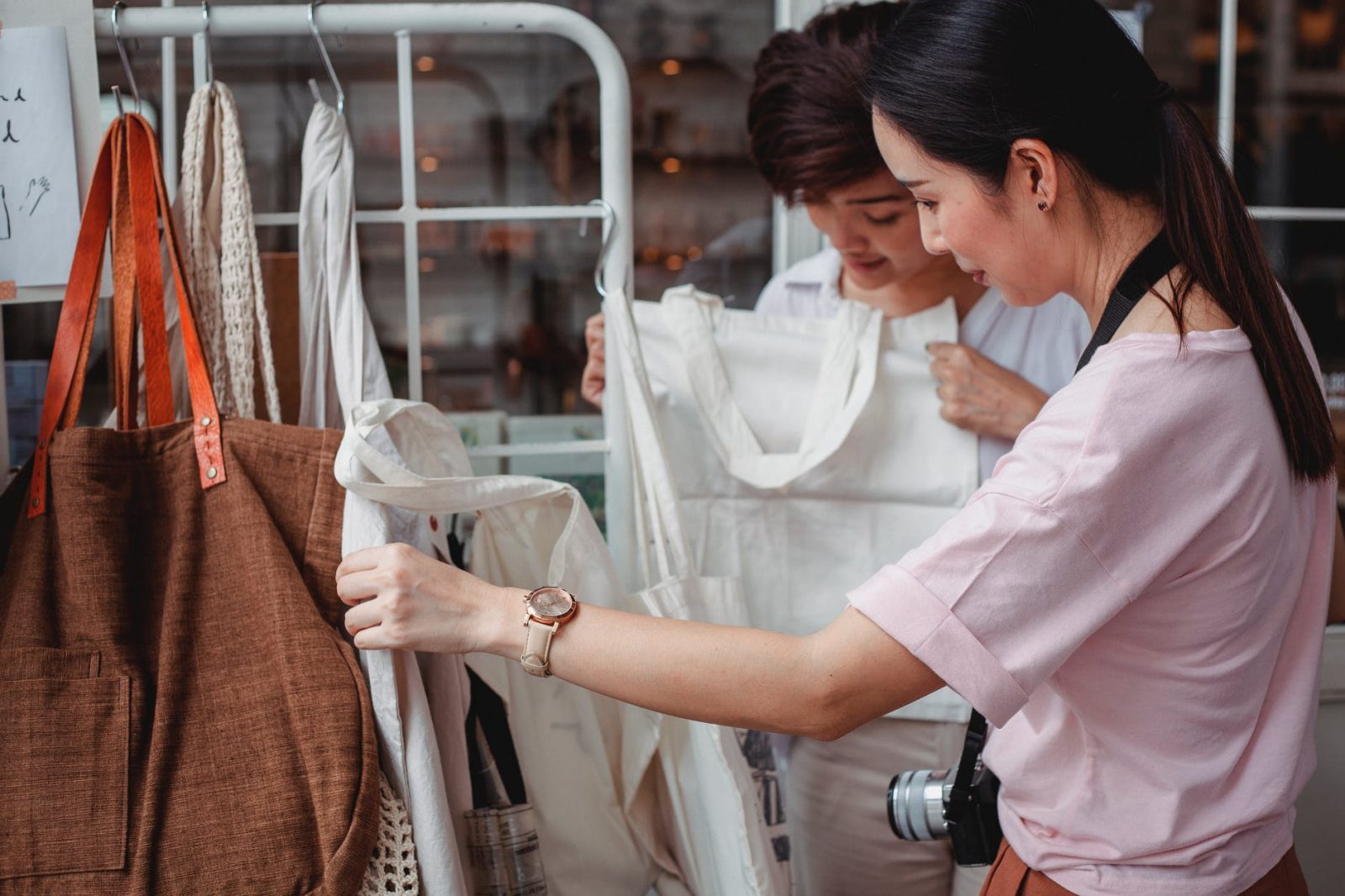Be it minimal or loud, every one of us has an aesthetic, our own style. It was about time that we rolled out our responsible practices to this everyday element of our lives. So, what’s cool? A Knack for sustainable fashion trends.
Green is, and always will be, in fashion
Sustainable fashion trends nod at subjects like saving natural resources, minimizing our carbon footprint, preserving biodiversity, fair and safe working conditions, and a healthy lifestyle. If you contribute to these causes through your aesthetic, congratulations! You’re a fashionista! And if you don’t care about any of those things, you really should. (Sustainable fashion is long-lasting and durable, you’ve got yourself a great deal!)
Sustainable fashion, what?
The concept pervades across the entire metamorphosis of fashion. The sustainable fashion regime regulates the environmental and socio-economic impact created by the value chain and disposal of fashion items: clothes, shoes, accessories, etc. From a brand’s perspective, sustainable practices stretch from sourcing to design, manufacturing, and distribution. And from a consumer’s perspective, from purchase to use and disposal.
Fast fashion is a big no! What can brands do about it?
Fast fashion is a highly profitable business model designed to rapidly produce high volumes of fashion items at a low cost. Accelerating mass-production while cutting costs almost definitely forsakes environmental and socio-economic responsibilities by dint of profit. So, what stratagem can(should) brands take up?

Our responsibilities get bigger as we do and that is why a lot of the planet’s well-being depends on brands. As brands can reach more people than you and I ever could, it is largely up to them to raise awareness about what’s good for the planet, and consequently, for us. As brands embrace sustainable fashion trends, they align their beliefs with Millennials and Gen Zs and expand their customer base. Millennials and Gen Z’s increasing interest in environmental and social issues is reflected in their consumer behaviour; green is trendy! Plus, worn-out vintage items are a thing now!
The environmental perspective
The goal should be to minimize the environmental impact of operations and products. Responsible and efficient use of natural resources, using renewable energy and low impact materials and designs, setting up waste treatment plants, recycling and fostering repair, remake, rent, and reuse through marketing campaigns and encouraging sustainable consumption and care for fashion items are some ways in which brands can achieve this goal.
The socio-economic perspective
This can be broadly summed up by ethical practices and fair and safe working conditions. Brands can warrant their socio-economic beliefs in view of sustainable fashion trends by valuing every stakeholder, ensuring diversity, fair distribution of opportunities, and safety within the workplace and distribution channels, endorsing good ethics, aligning with international codes of conduct, and raising awareness.
Becoming a part of the trend
What never goes out of style? Sustainable fashion! The concept isn’t confined within brands; you can affiliate it with your life as well! Here’s how you can make fashion statements that count.

Know your brand
If you care about your planet, you need to do some research before you head out to shop. And don’t forget your glasses because you’ll have to read a lot of tags when the day comes. Look for products made of recycled, deadstock, or low impact natural and organic materials (i.e., hemp, linen, organic cotton, silk, wool, cellulose fibre, etc.), that have eco-friendly, low or zero-waste designs (find brands that prioritize cutting down byproduct waste from their activities), and that are made in facilities run by renewable energy. While we know that every brand isn’t 100% transparent, we should at least be regardful of a brand’s values, beliefs, and certifications before buying from them. Our purchase decision is our way of showing support to brands that follow sustainable fashion trends and discouraging those that don’t take responsibility for their harmful and unfair activities.
Here are some sustainable fashion brands you can check out:
Boden
Levi’s
Monsoon
Chol
And for children’s clothing… here’s our favorite!
Edamamma
And finally, if you like vintage fashion..
Stellar Vintique
Now moving on..
Educate yourself
You first need to learn what to look for in the brand backgrounds and tags before diving into research or shopping. Knowing which materials are organic, which dyes are eco-friendly, and what certain certifications (i.e., GOTS, ZQ, OEKO-TEX 100, etc.) mean, makes it a lot easier for us to make conscious and responsible purchase decisions. Knowledge of sustainable consumption patterns and caring and washing practices come in handy in the post-purchase period.
Buy durable clothes and delay shopping
Buy durable clothes that you’re sure you’ll wear through the years, take good care of them, and when you get tired of them, revamp! When you’re looking for durable clothes, you’re really just looking for a quality product; characteristic of every smart buyer. Quality products may be a little more expensive but they last in the wardrobe longer.
Revamp your wardrobe
Revamping is the same as getting new clothes without paying extra bucks or cluttering your closet; it’s a great ‘buy less, wear more’ scheme. A classic DIY example of this is turning your old pair of jeans into stylish ripped jeans. It’s a cool way of exploring your creativity and expressing your personal style. At the end of your adventure, you’ll have the same clothes, but new clothes! So, go hunt for revamping ideas maybe?
Buy second hand
The fast-fashion market may be growing but consumers are becoming more aware of its dangers. Experts predict that the resale market will grow larger than the fast fashion market in the coming decade. Many online platforms already facilitate resale. There really is no shame in buying pre-owned clothes. You’re saving the planet, so, be proud of it!
Share, borrow, and rent
Purchasing a fashion item that you’ll use only once, or a few times, is quite wasteful. In contrast, borrowing from a friend or renting is smarter, more responsible, and more economical. The growth in the resale market will incline more brands to take on rental models. Which, again, opens our options. Another economical and prudent option is sharing; variety at a lesser price in money and in environmental footprint.
How to get rid of clothes: donate, swap, and resell.
Let’s say, hypothetically, you’ve put on the same jacket in the last several winters. You love it, it’s still wearable, but you’re also kind of tired of it. What do you do? Instead of throwing it in the bin, give it away to someone who needs it or is excited about it! Swap with a friend and look brand new! Or just sell it online; it’s at least better than letting your jacket (slowly) rot away.
The fashion industry is gigantic and hence capable of being substantially detrimental to the environment and people. Sustainable fashion, on the other hand, is a practical way of minimizing our impact on the environment and protecting its inhabitants.
See how you could look stunning in green? :’)


























The best thing about decluttering wardrobe is donating clothes afterwards. Glad to discover that I’ve been keeping it sustainable. ✌️ Very nicely written.
Yes! You’re the best kind of fashionista!
And I’m so glad you liked it!